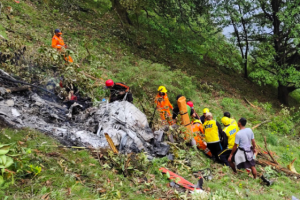Brain Injuries and Nerve Damage Among Flight Crews Draw Urgent Calls for Action
TEAM TTP: Airline crews—those trusted professionals ensuring safe travel—are facing a little-known danger lurking in airplane cabins: toxic fumes. Recent investigations reveal that pilots and flight attendants have suffered injuries comparable to NFL players’ concussions after breathing contaminated air mid-flight.
Since 2010, airlines have filed thousands of safety reports with regulators, noting that toxic fumes can leak through a system which pulls air from the engines and circulates it unfiltered throughout the aircraft. These events, called “fume events,” have become more frequent, especially on Airbus A320 jets. Crew members exposed recount confusion, loss of consciousness, and persistent symptoms like memory lapses, tremors, and personality changes—sometimes after repeated exposures.
Imagine a typical flight, suddenly disrupted by dense smoke filling the cabin. Crew are forced to instruct passengers to breathe through their clothing and stay low. Behind such drama is a complex problem: the bleed-air system, which pressurizes cabins but can be tainted by leaking oil or fluids from the engines. Doctors have described the resulting injuries—chemical concussions and nerve damage—as “micro concussions” with consequences that can accumulate over time.
Florence Chesson, a JetBlue flight attendant, suffered a traumatic brain injury and lasting nerve damage after a fume event on a flight to Puerto Rico. She described feeling “drugged,” and watched her colleague collapse before both needed hospital care. “What just happened to me?” she kept repeating, waking the next day with a sensation of her brain “on fire.” Her neurologist likened her condition to that seen in NFL linebackers after brutal hits.
These cases are now documented in hospitals and courtrooms. Crew members like Delta pilot Myers lost their medical licenses after fume-induced “chemical nervous system injury,” setting new legal precedents for recognizing aviation-related illnesses. How many others are flying with hidden injuries?
Some airlines argue these events are rare and that cabins remain safe—they continually update safety protocols and have replaced key components on at-risk aircraft. Airbus and Boeing also insist their planes meet all standards, while the FAA says the health risk is minimal. But leaked internal emails and studies point to a troubling rise in incidents and show chemicals like organophosphates, once used as nerve agents, entering the cabin air after engine leaks.
Healthy skepticism persists—one large medical study found no significant difference between exposed and non-exposed crew in terms of disease prevalence. However, clusters of crew with concussion-like symptoms and mounting anecdotal evidence compel further research.
With the fume event rate now over 100 per million departures, the key question is: How many crew members must fall ill before change arrives? Should airlines adopt better filters and move away from bleed-air systems entirely?
Reader Questions
-
Have you ever experienced unusual smells or symptoms on a flight?
-
Should airlines install advanced air filters for every passenger aircraft?











Add Comment